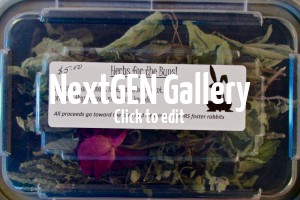This week we say good by to veterinary visitor Maria Rosa de Jaureguizar i Tesas from Spain. She was a terrific help with all of our post surgical and hospital patients, and we enjoyed learning a bit more about Spanish culture and traditions! Thank you, Mari.
Here's Mari's report-
I had the great opportunity to visit here for 2 month. I remember the day I arrived, a new graduate veterinarian in a new country on a very busy surgeries day. I remember that when I came in the hospitalization area there were a lot of rabbits waiting for a surgery. I was so amazed! I had never seen so many surgeries on exotic animals in one day before! Moreover, I've seen a lot of challenging cases, great diagnostic approach and great protocol treatment for exotic pets and wildlife. Some of the most interesting things I have seen here were an undifferenciate soft tissue sarcoma in a chinchilla which was treated with radiation therapy, hypertrophic cardiomyopathy in a bunny, dilated cardiomyopathy in an skunk, foreign body gastrointestinal obstruction in one arctic fox, an obstruction of the lacrimal canal in one African Grey Parrot caused by the epithelial duct hyperplasia secondary to hypovitamin A, one bearded dragon with one colonic mass, perform barium contrast in one snake. There were a lot of neurological and ophthalmologic cases too. I've seen endoscopy in a Crested Cockatoo with reproductive disease and bronchoscopy in an African Grey Parrot with bleeding coming from the larynx.
.
This clinic is an excellent educational center for veterinary students,
veterinary technicians and veterinarians who are interested in exotic pets.
They share their knowledge and practice together every day. Every week, we
participated in a journal club, where we read and discuss the new exotic animals
articles published. That's a great way to keep in touch with the latest
advancements. I studied, practiced and learned so much with them!
Dr. Lennox and all her staff are really nice and friendly. During my stay
here I could share with them a lot of American and Spanish traditions, from
the Thanksgiving day to New Year grapes and the typical Spanish Paella! They
became my Indy family, and from the first day until the last one I felt at
home. I really want to thank you everything you gave me. I'll miss you!
-Mari
 Congratulations to Dr. Samantha Swisher, who this week completed her 2 year residency at the Avian and Exotic Animal Clinic. Dr. Swisher will now remain at AEAC as an associate veterinarian, and work towards completing her Exotic Companion Medicine Board Specialty.
Dr. Swisher was surprised to see that her "graduation" included robes, presentation of a wand, and a book entitled "Magic Animal Formulary".
Congratulations to Dr. Samantha Swisher, who this week completed her 2 year residency at the Avian and Exotic Animal Clinic. Dr. Swisher will now remain at AEAC as an associate veterinarian, and work towards completing her Exotic Companion Medicine Board Specialty.
Dr. Swisher was surprised to see that her "graduation" included robes, presentation of a wand, and a book entitled "Magic Animal Formulary".


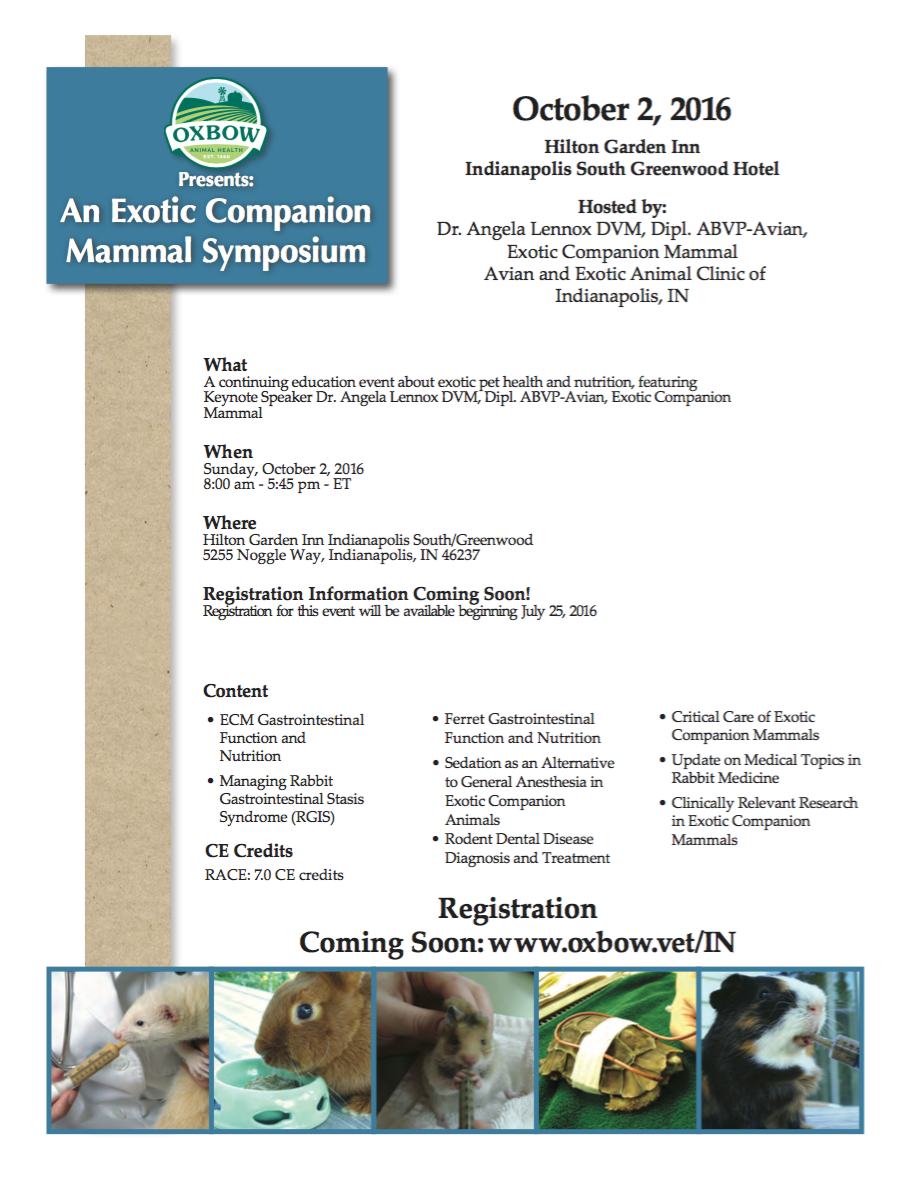
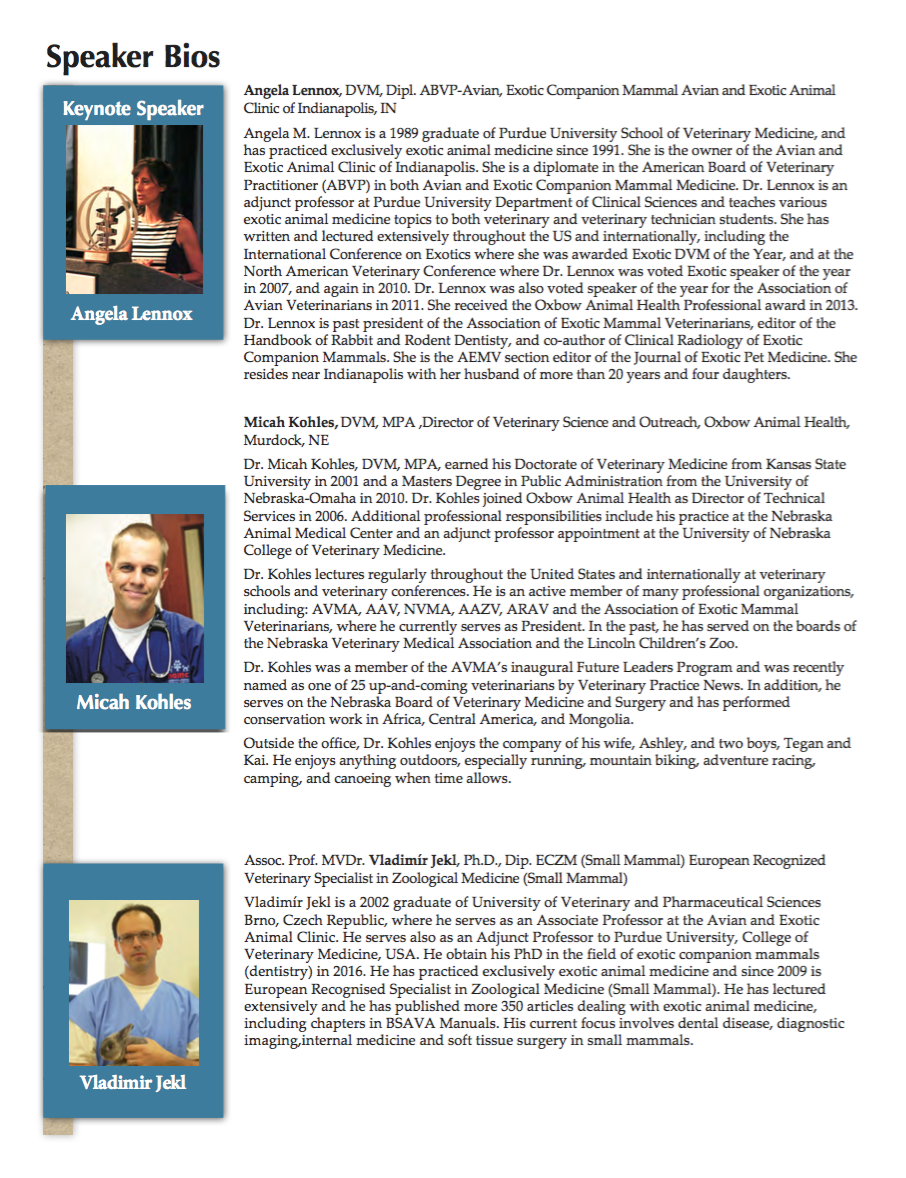






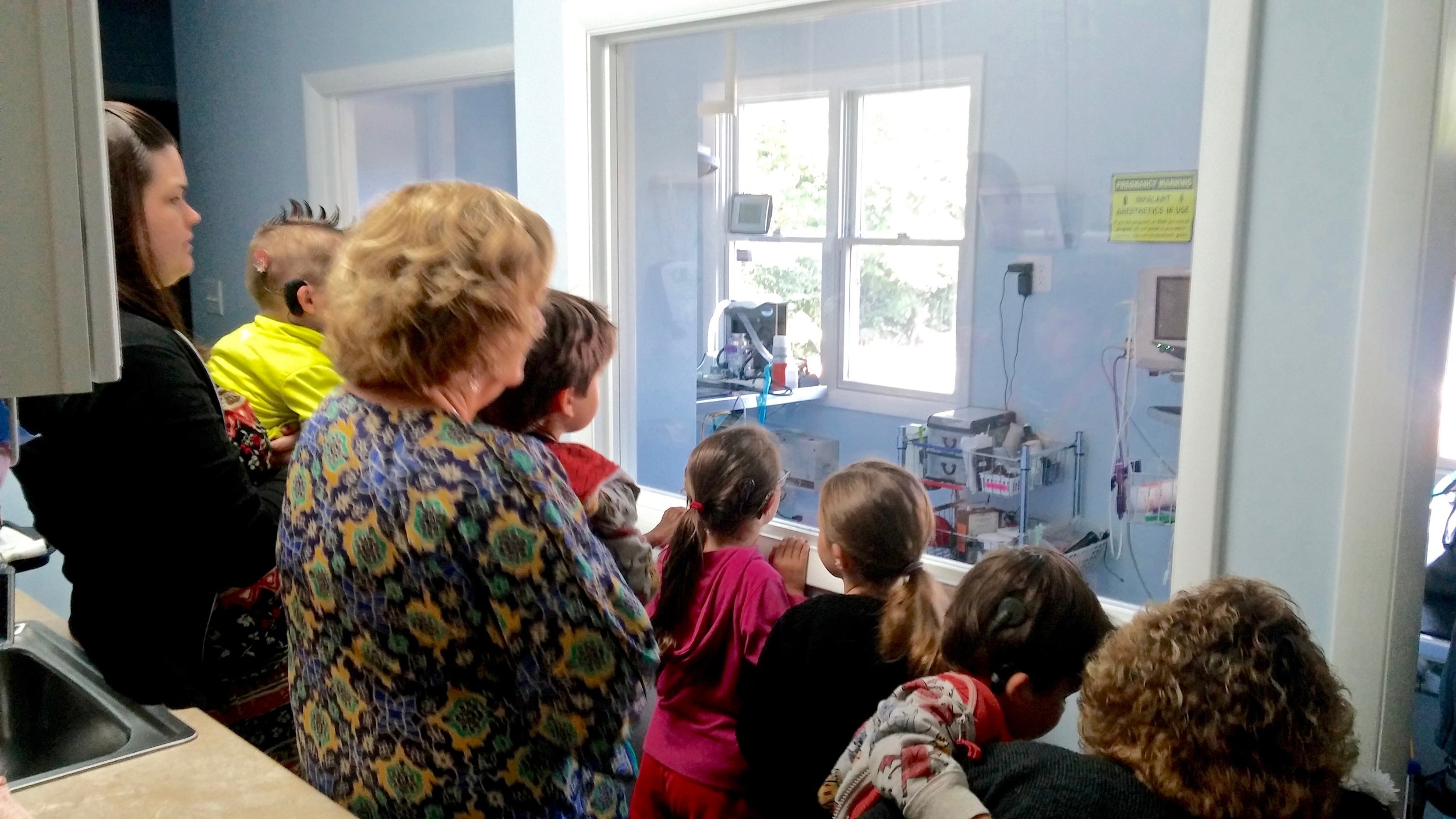
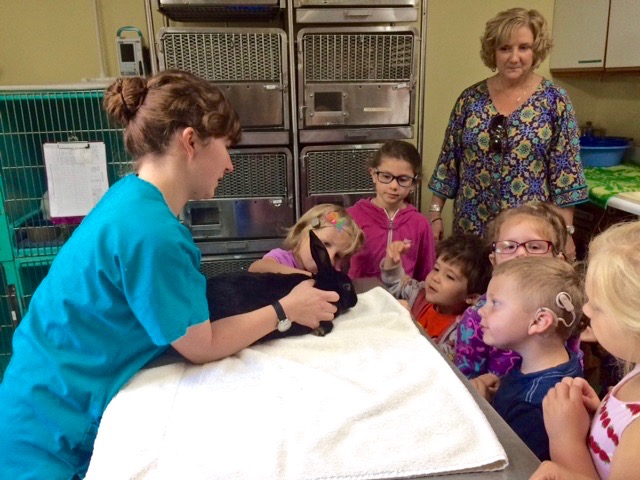




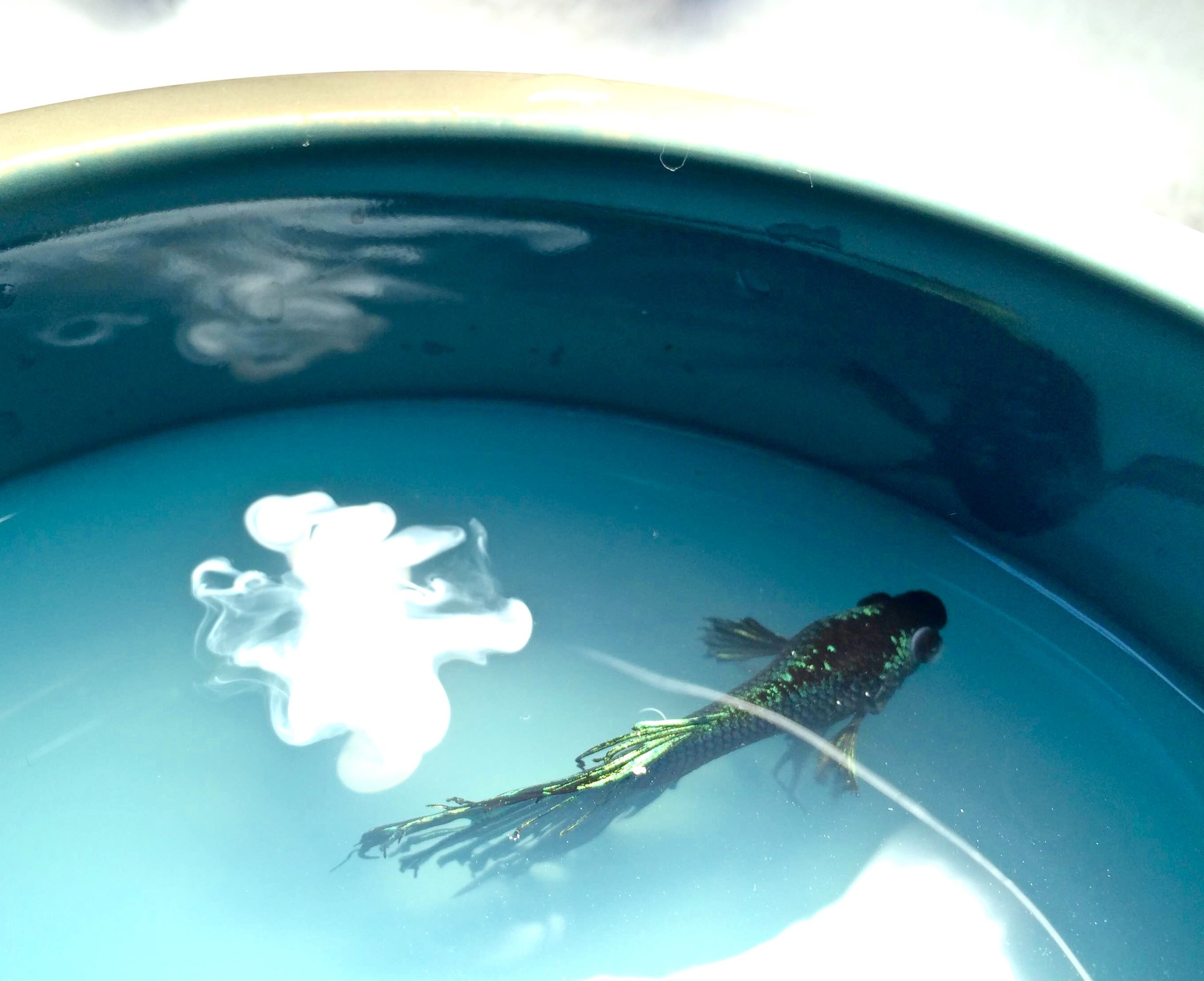
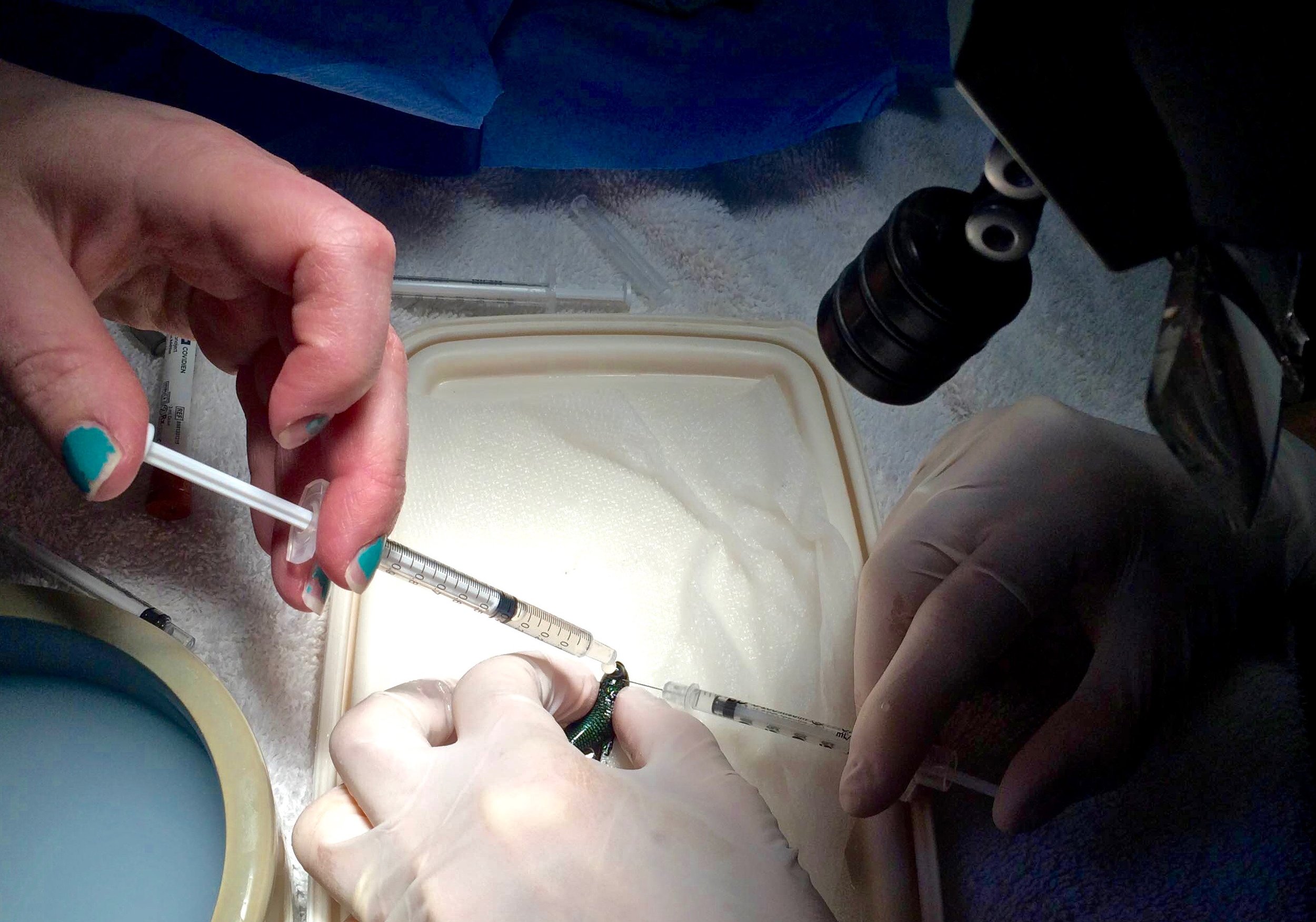














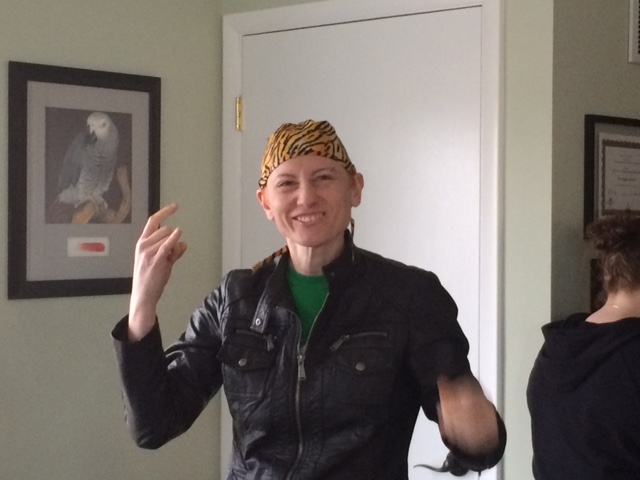
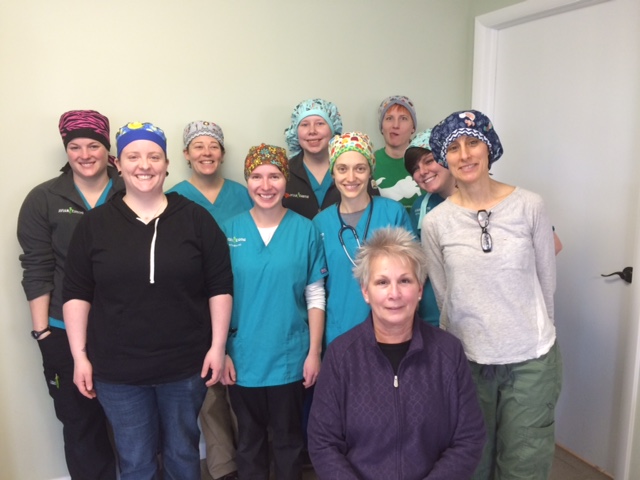
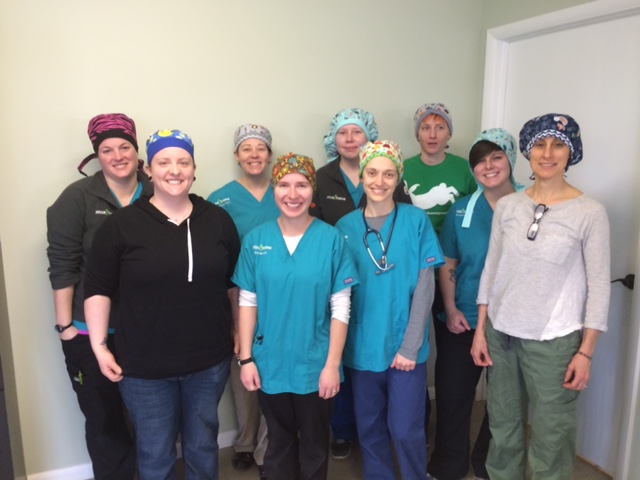

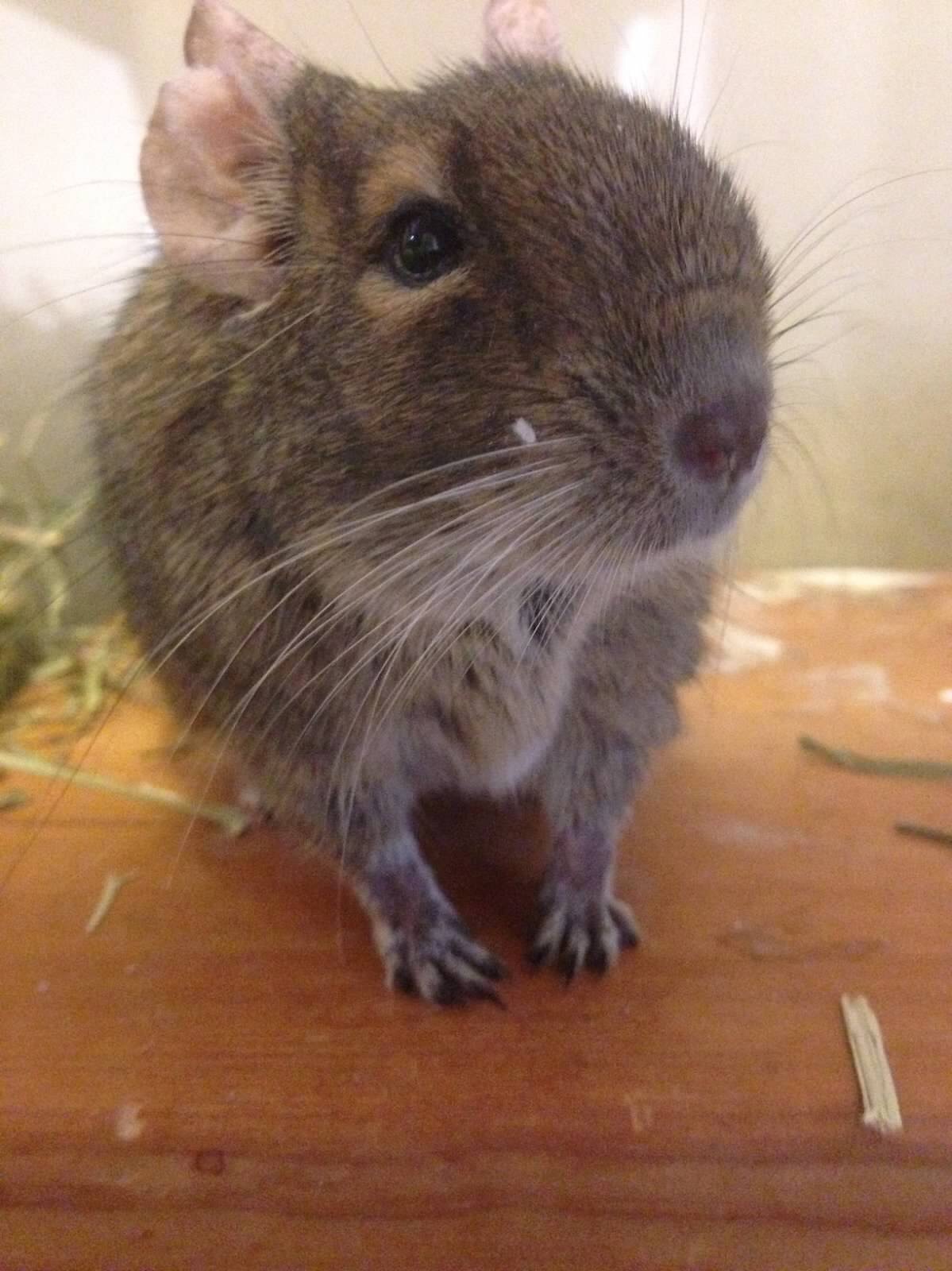 eavy hearts that we announce the passing of Phil, the clinic degu. Phil came to us nearly 8 years ago as an adult, though no one was quite sure of his actual age. He, unlike most of his species, couldn’t stand living with other degus and had to be kept separately from his family. He lived alone quite happily in one of our exam rooms, where many of you may have seen and interacted with him. Phil enjoyed exploring the clinic in his giant hamster ball while his cage was being cleaned, being scratched (but not picked up!) and rearranging his cage furniture. About 6 months ago, Phil started to have some health problems and it was decided that it was time for him to retire as clinic pet. He went to live with our receptionist Megan, where he enjoyed hanging out on the couch getting snuggled during movie time and sleeping against the side of the cage against his cat friend Samurai Sam. When in his ball, he particularly liked forming trains with Megan's other pets to follow her around the house! Megan spoiled him rotten until he finally passed on Saturday. All of us will miss him greatly. As a legacy to Phil, we are opening his cage up to adoptable animals from one of our
eavy hearts that we announce the passing of Phil, the clinic degu. Phil came to us nearly 8 years ago as an adult, though no one was quite sure of his actual age. He, unlike most of his species, couldn’t stand living with other degus and had to be kept separately from his family. He lived alone quite happily in one of our exam rooms, where many of you may have seen and interacted with him. Phil enjoyed exploring the clinic in his giant hamster ball while his cage was being cleaned, being scratched (but not picked up!) and rearranging his cage furniture. About 6 months ago, Phil started to have some health problems and it was decided that it was time for him to retire as clinic pet. He went to live with our receptionist Megan, where he enjoyed hanging out on the couch getting snuggled during movie time and sleeping against the side of the cage against his cat friend Samurai Sam. When in his ball, he particularly liked forming trains with Megan's other pets to follow her around the house! Megan spoiled him rotten until he finally passed on Saturday. All of us will miss him greatly. As a legacy to Phil, we are opening his cage up to adoptable animals from one of our






